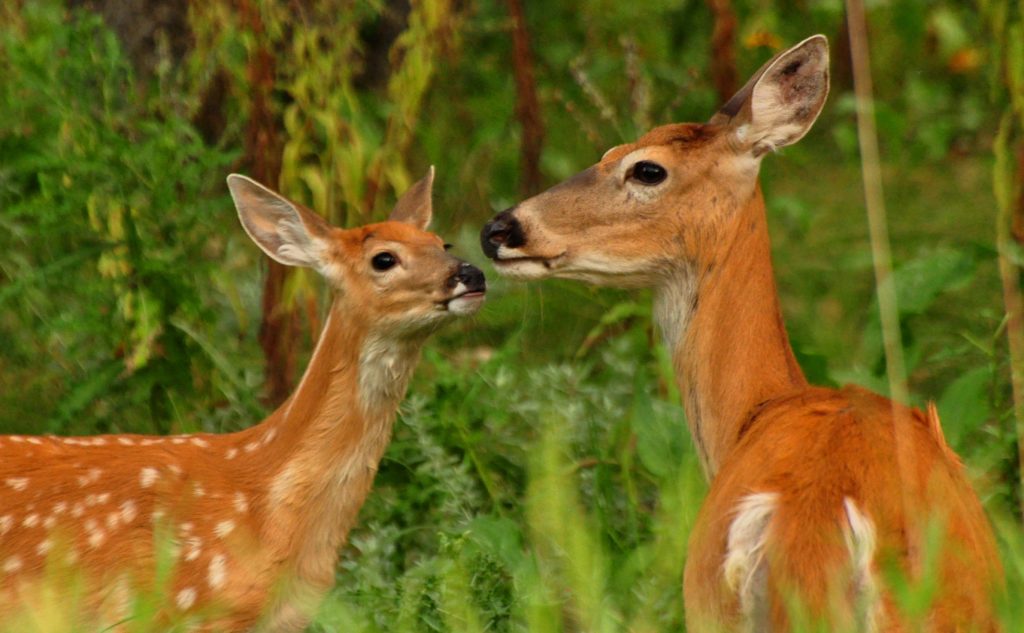Photography courtesy of Lowell Washburn, all rights reserved.
Intelligent, adaptable, unbelievably resilient; the white-tailed deer is one amazing creature. The white-tail’s resilience – its ability to survive under extreme circumstances — has never been more evident than it has this spring and summer. Everywhere I go, I see does with fawns.

So, what makes this noteworthy? To put things into proper perspective, we need to look back to last winter. I hang my hat in extreme northern Iowa where, even by our standards, last winter was regarded as exceptionally severe. Winter temperatures plummeted into the negative double digits; snow accumulations kept building. Delayed travel and school closings became the norm. Seemingly unable to escape winter’s icy grip, the North Iowa landscape remained covered by as much as 20 inches of snow as late as mid-March.

Back in mid-February, deer enthusiasts had already become concerned over the plight of wintering white-tails. With continuing polar temperatures and snowbound landscapes, it became obvious that pregnant does were having a tough time finding forage. And as the winter dragged well into March, it seemed inevitable that many deer – especially yearling does — would lose their fawns.

Somehow, it never happened. Not only did does manage to keep their fawns, but most are being accompanied by twins. Yesterday, I even observed a doe with triplets. Considering the past winter, it doesn’t seem like such a thing could be possible. Like I said, the white-tailed deer is one amazing creature.


 Tom Cope
Tom Cope Sue Wilkinson
Sue Wilkinson Susan Judkins Josten
Susan Judkins Josten Rudi Roeslein
Rudi Roeslein Elyssa McFarland
Elyssa McFarland Mark Langgin
Mark Langgin Adam Janke
Adam Janke Joe Henry
Joe Henry Kristin Ashenbrenner
Kristin Ashenbrenner Joe Wilkinson
Joe Wilkinson Dr. Tammy Mildenstein
Dr. Tammy Mildenstein Sean McMahon
Sean McMahon